Interview with Mathematician and Physicist Arnold Neumaier
Table of Contents
Please give us a brief background on yourself
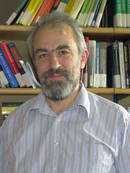 Over 40 years ago, I studied mathematics, physics and computer science in Freiburg and Berlin (Germany). My Ph.D. thesis was in pure mathematics, but I was later drawn more and more into applied mathematics. Since 1994 I am a full professor of mathematics at the University of Vienna (Austria), where my official subject is optimization and numerical analysis. Since these are central subjects everywhere where mathematics is applied, I am interested in much more. Concerning applications in physics, I worked among others
Over 40 years ago, I studied mathematics, physics and computer science in Freiburg and Berlin (Germany). My Ph.D. thesis was in pure mathematics, but I was later drawn more and more into applied mathematics. Since 1994 I am a full professor of mathematics at the University of Vienna (Austria), where my official subject is optimization and numerical analysis. Since these are central subjects everywhere where mathematics is applied, I am interested in much more. Concerning applications in physics, I worked among others
- on the protein-folding problem (globally minimizing the potential energy function that determines the biologically active form of a protein molecule),
- on the numerical computation of quantum properties of small molecules,
- on the use of Lie group theory to show how to realize a desired optical input-output behavior by a quantum optical network, and
- on understanding quantum mechanics in terms very close to classical mechanics.
My scientific reputation is primarily based on my mathematical work. My research in physics therefore has the advantage that unlike full physicists I don’t feel the pressure to publish incremental work in a competitive environment. Instead I can spend my free time on unpopular or hard problems where good work does not immediately lead to results but needs long gestation periods of seemingly very little or no progress before things fall into place.
I often feel like working on a puzzle with 5000 pieces in which I assemble larger and larger seemingly disconnected patches forming islands in my quest for understanding the mathematical and philosophical foundations of physics. From time to time I see how two of these patches suddenly want to coalesce. This leads to breathtaking moments where the continuous hard work culminates in exciting insights into the deeper working of physics. The joy of increased understanding is not diminished by the realization that, usually, I find later that I was not the first to have had these insights. One day I hope to see the whole puzzle finished. From the parts I have already seen and understood I can tell that it will surely be a very beautiful whole.
Thus I sympathize very much with sentiments expressed repeatedly by John Archibald Wheeler, such as:
Someday, surely, we will see the principle underlying existence as so simple, so beautiful, so obvious that we will all say to each other, ‘Oh, how could we all have been so blind, so long.’ (from ”A Journey Into Gravity and Spacetime”, Scientific American Library, 1990)
You seem to effortlessly balance the theoretical with the practical. How do you see these two as a relationship now and going forward in science? Where does such diversity of interest in both come from?
Two years after my Ph.D., my formerly atheistic world view changed and I became a Christian. I got convinced that there is a very powerful God who created the Universe, who controls what appears to us as chance, and who is interested in each of us individually. I understood (with Galilei, and later Newton and Maxwell) that God had written the book of nature in the language of mathematics. As a result of these insights, one of my life goals became to understand all the important applications of mathematics in other fields of science, engineering, and ordinary life. It is a challenge that keeps me learning all my life.
Theory and application prosper best together: To do the best in an application one needs to be familiar with (or help create) the best theoretical tools available. There is nothing more practical than a good theory! Though this saying was created (in 1951) by a social scientist, Kurt Lewin, it applies as well to natural science, engineering, and ordinary life.
Knowing the power of a tool in various applications gives highly discriminating standards for assessing its quality. This is important for separating the wheat from the chaff in theoretical work. It also gives a good feeling for the natural limits of a theoretical approach. It signals which of the many questions that one can ask about a subject are important and are likely to find one day a strong answer.
What are some technologies and scientific advancements you are most interested in?
Technologies don’t hold much interest for me. I do not even own a car or a TV set. However, I possess a laptop and a smartphone – primarily so that my 11 year old son Felix can play with them.
I notice that mankind is well on the way of surrendering its sovereignty to machines (computers, robots, intelligent networks). It may well turn out to be irreversible, but whether it is in the interest of the human race is somewhat questionable.
Part of the research work in my group is about teaching computers how to think like a mathematician. Or, more precisely, like me, since I am the only mathematician I know well enough to understand his precise way of thinking.
Apart from that, I concentrate on advances in optimization and in the mathematical and philosophical foundations of relativistic quantum field theory (QFT).
What do you think are neglected open questions in QFT that deserve more attention?
The best people always focused far too much on working towards new physics in the sense of extending the standard model to include quantum gravity, string theory, dark matter, etc.. They usually neglect the fact that there are still many unresolved fundamental issues with the simplest realistic QFTs: quantum electrodynamics (QED) and quantum chromodynamics (QCD).
In particular, the question is wide open of how to model and quantitatively and accurately predict bound states (hadrons, nuclei, molecules) from first principles. We have working simplified models on many levels of detail without a deeper understanding of how each coarser model is derivable from the more detailed ones. The simplified models are postulated without sufficient justification, using hand-waving arguments only.
How do you see the status of the Yang-Mills mass gap problem?
It is the only one among the Clay Millennium problems where the task is not to solve a question already clearly stated in precise mathematical terms. Instead, the requirement is to find a mathematical setting in which partial results from quantum field theory obtained heuristically by theoretical physicists are given a logically sound footing.
The task is to turn the physicist’s results into theorems about well-defined mathematical objects with all the properties demanded by the application. In essence it is a quest for the mathematical modeling of quantum field theory in 4 space-time dimensions with specified interactions. This must be done for Yang-Mills fields – a class of concrete theories deemed to be technically the easiest. A solution will consist of a nonperturbative mathematical construction of this class of QFTs. In particular, the construction will produce a representation of the bounded part of the quantum algebra on a Hilbert space of physical states.
If solved convincingly the solution will not only significantly advance the power of the mathematical toolkit of physicists but may very well change the way quantum field theory is taught to the next generation of students of QFT.
You amplify the need to formulate conceptual foundations for nonperturbative QFT. Do you have any suggestions or proposals?
Well, all I can safely say is that the correct approach has not yet been found. It is not even known what it means in logically precise terms to have a nonperturbative construction of a relativistic QFT with given interaction terms.
In the literature I see a number of worthwhile approaches. They appear to contain complementary parts of what is needed. But none of them is likely to have on its own the strength needed for a successful attack on the problem.
Strocchi’s work on the algebraic structure of rigorous nonperturbative gauge theories will surely be relevant in some way.
The theory of unitary representations of infinite-dimensional groups forms the backbone of many exactly solvable models in 2 space-time dimensions and in nonrelativistic quantum field theory. It faces in higher dimensions similar limitations as current 4D relativistic QFT. I expect that insights from there (due to Mickelsson, Rajeev and others) will play a major role on the way towards proper nonperturbative constructions.
Vertex algebras are structures that coordinatize nonperturbatively 2-dimensional conformal field theories. I expect that an appropriate 4-dimensional generalization of vertex algebras will play a role in giving rigorous foundations for operator product expansions. Holland’s perturbative work in this direction might help to abstract the properties needed. A study of representations of infinite-dimensional Lie groups in vertex algebras might overcome some of the problems of group representations in Hilbert spaces.
The nonrigorous manipulations done in the context of the closed time path (CTP) functional integral approach to kinetic equations appear to be relevant, too, for a rigorous nonperturbative setting. Perhaps there will be one day a rigorous version of the exact renormalization group techniques (e.g., work by Wetterich) used in this context.
But of course, the real problem is to combine the various approaches and insights in the right way. If I had realistic suggestions I’d not mention them here but would work them out and win the millennium prize!
There are other questions in QFT that get much popular press these days, say issues related to “holography” of various sorts. What do you think about these problems and the way they are being approached by the community?
Holography (especially its realization in the AdS/CFT correspondence) has some clear value and has begun to impact numerical modeling in QFT. But (unlike most outspoken experts in the field) I believe that it is just one of many small tools, and that it will have little impact on the big question of the unification of physics in QFT. Most likely, real progress in the latter will depend on a much better understanding of the nonperturbative aspects of standard QFT. This understanding must improve especially in the infrared, where the true complexities and the most severe unsolved problems show up.
You have been highlighting the fact that perturbative QFT has a rigorous formulation in terms of causal perturbation theory: How do you explain the curious sociological effect that most quantum field theorists are unaware that their subject has solid foundations, foundations not created by mathematicians, but found by physicists themselves?
The main reason is that most people working in QFT care little about the foundations, which usually only consolidate computations well-known heuristically for a long time. The additional rigor now available seems to them not worth more attention than the rigorous treatment of delta ”functions”. For 20 years after their introduction by Dirac, these had been thought to be mathematically dubious, but then they have been given a respectable rigorous foundation through the theory of distributions. That the latter – though over 70 years old – advance is hardly mentioned in typical quantum mechanics textbooks is a sign of this lack of care.
In addition, theoretical physicists working in QFT tend to dismiss the more rigorous algebraic approach championed by the mathematical physicists. There are two reasons for this: First, there is a severe language barrier separating the two communities. Second, long ago, at the time where this barrier was far less conspicuous and more than a few people tried to bridge it, the results of the algebraic approach were still far too weak to be useful for the practitioner. The latter has changed, but the barrier persists.
What are examples of issues in QFT where having the rigorous formulation makes a difference?
The main advantage is that the rigorous formulation shows that the infinities that figure in the textbooks are just the result of sloppy motivation and argumentation. They are completely absent when one handles the distribution-valued field operators with the care required by their singular nature. It is even possible to do this without significantly more formal effort than with the conventional heuristics.
All perturbative formulas can be constructed in a clean and unambiguous way, without the need to take any dubious limit. There are no cut-offs that would have to be moved to infinity, possibly through a Landau pole singularity. Neither is there a need to work with nonphysical, nonintegral dimensions and to take the physical limit of 4 dimensions. In addition, everything is manifestly covariant, so that the underlying principles are never compromised.
Finally, the rigorous approach shows that there is something deeply amiss in the traditional S-matrix formulation of perturbative QFT, resulting in still unresolved infrared problems. The deeper origin of the latter is that the traditional setting has an incorrect view of the asymptotic state space.
In direct violation of observable physics, perturbation theory treats the electron (which has an intrinsic electromagnetic field) as a chargeless asymptotic particle. Similarly, confined quarks (which don’t exist asymptotically) are treated as asymptotic particles, appearing as in- and out-states in the perturbative S-matrix. On the other hand, bound states that should be asymptotic states are not directly visible in the perturbative S-matrix – their existence is inferred only indirectly through the poles of the renormalized propagators.
Recently there has been a claim of some advancement regarding the infrared behaviour of massless fields, due to the thesis by Paweł Duch, ”Massless fields and adiabatic limit in quantum field theory”. How do you evaluate the results of this work with regards to the open questions you mentioned?
Indeed, after a long time of neglect, interest in these questions has recently grown again.
The thesis mentioned embeds the Faddeev-Kulish approach into the causal perturbation theory framework, which is a significant improvement to the latter. (It remains to be seen whether the limitations of the Faddeev-Kulish approach pointed out in a recent paper by Dybalski are absent in Duch’s approach.) On the other hand, the author only mentions (on p.57) the potentially most interesting stuff – the strong adiabatic limit, amounting to a perturbative construction of the S-matrix without infrared problems. But he leaves it unjustified, as work to be presented elsewhere.
Recent work by Strominger (see his review here) and Herdegen on the asymptotic structure of QED appears relevant, too.
None of these addresses the additional problems encountered when bound states are present. For the latter, there is related work by Derezinski & Gerard on the nonperturbative construction of the S-matrix in nonrelativistic models that exhibit perturbative infrared problems.
In your “Theoretical physics FAQ” you highlight, among others, the two textbooks by Günter Scharf on Causal perturbation theory, such as “QFT – A true ghost story”: A while back Scharf has added a new chapter to this book, which appears at the end of the new version titled “Gauge field theories: Spin one and spin two – 100 years after general relativity”. In there he considers isotropic but inhomogeneous solutions to Einstein’s equations and advertises them as a potential solution to the dark matter problem. What do you think of this suggestion?
I leave this to the experts on dark matter and its properties.
My interest in the true ghost story lies primarily in the fact – partly anticipated much earlier in a less rigorous way in papers by Steven Weinberg – that it shows the power of causality. Causality alone forces the gauge group structure in the presence of massless spin 1 fields (including the ghost features). It also forces the general diffeomorphism covariance structure of massless spin 2 fields.
Scharf’s work also shows that there seems nothing wrong with canonically quantized gravity. Indeed, I’d bet that the final unified field theory of all four fundamental forces will be a canonically quantized field theory and not something more complicated such as string theory.
On first sight, the problem of getting a clean and reasonably rigorous handle on the infrared problems of gauge field theories and the problem of finding a consistent nonperturbative formulation of quantum gravity seem to be far away. But I believe that these problems are two intimately related sides of the same technical obstacle that needs to be overcome to properly understand 4-dimensional interacting relativistic quantum field theory.
In your publications and also in your FAQ, you consider issues of interpretation of quantum mechanics. Do you think that there are open problems in the interpretation of QM that matter and need a solution?
A widely open foundational problem – which almost nobody seems to be interested in, in spite of its basic nature – is the question of how quantum mechanics (QM) is embedded into quantum field theory. The latter is the more fundamental subject, but it is seemingly built upon the former, though only through a somewhat loose connection: QFT provides scattering matrices for use in QM.
But conceptually, the objects with which quantum mechanics works (particles, rays, filters, detectors) and their properties (location, number, interaction) should be described by local patterns in spatially extended quantum fields. Here virtually nothing is known. It is not even clear how a ray containing a stream of particles generated by a source and observed by a detector should be modeled by a QFT description. It is unsolved how to do this in a way that the traditional properties of the ray assumed in its quantum mechanical treatment could be derived rather than postulated.
Clearly this involves problems of idealization and approximation, like going from quantum theory to thermodynamics using statistical mechanics. Thus quantum mechanics should be built on QFT rather than the other way round. An investigation of this should provide limits on the accuracy of the quantum mechanical assumptions due to the approximations involved in the idealizations made.
I believe that such investigations would pave the way for solving the long standing issue – unparalleled in any other area of science – of a multitude of coexisting but mutually incompatible interpretations of quantum mechanics. All these interpretations take the idealizations at face value and pretend (unlike their experimental colleagues who need to cope with the intrinsic uncertainties in defining the systems) that the customary foundations of quantum mechanics are exact. In my opinion, treating these approximations as exact is the core of the apparent paradoxes and the resulting perceived weirdness in the foundations of quantum mechanics.
Do you have a suggestion for the solution?
It may be that the problem of finding satisfying philosophical foundations for quantum theory and the problem of finding rigorous logical foundations for quantum field theory will have to be solved simultaneously. This is suggested by the fact that the superselection rules inherent in the discussion of infrared problems give rise to classical (i.e., everywhere commuting) variables. Another hint is that, currently, textbook QFT lacks all information about positivity (the Hilbert space structure of the underlying Fock space is destroyed by renormalization), which is indispensable for the interpretation of QFT in terms of measurement.
On the other hand, a satisfying solution of the measurement problem may be just around the corner. My thermal interpretation seems to be the only interpretation of quantum mechanics that makes sense of the way quantum mechanics is actually applied to concrete problems without the need for extraneous elements: Neither external classical observers are needed nor hidden variables nor unobservable worlds nor subjective probabilities.
The problems that these additional elements in the traditional interpretations are supposed to solve are sidestepped in the thermal approach by realizing basic but previously overlooked facts: The first is that we never ever measure directly something microscopic. Instead we deduce the microscopic information indirectly from macroscopic measurements together with some theory relating it to the microscopic system of interest. The second fact is that a macroscopic observation is simply the deterministic reading of an ensemble expectation value, and not (as postulated in the conventional interpretations) an intrinsically random event governed by Born’s probabilistic rule. Both facts together eliminate the validity of all no-go theorems for a realistic interpretation of quantum mechanics.
The thermal interpretation takes into account the approximate nature of quantum objects. But is not yet sufficiently well developed to give convincing answers to the unsolved questions mentioned above. The latter would require explicit QFT models of the measurement situation that can be solved in the customary approximations (including suitable coarse graining and a thermodynamic limit). Their solution should lead to the conventional quantum theory including Born’s rule where it applies.
While I believe such an approach to be feasible, it is beyond my current energetic capacities. The latter are exhausted by a full-time mathematics professorship and my desire to finish a (compared to my original plans already delayed) book on quantum mechanics from a Lie algebra point of view. My earlier draft from 2011 has in the mean time grown oversize, so it will be split into two volumes. The first volume, concentrating on the mathematics, should come out in Spring 2020.
The second volume, expected to contain a lot of material related to the thermal interpretation, should be published one year later. With some luck, I might perhaps until then find the time to work out a reasonably elementary QFT model that convincingly shows what is currently missing: An understanding of which approximations are needed to deduce the conventional QM starting point from the QFT ontology underlying the thermal interpretation. The ultimate goal is to show that macroscopic measurements of microscopic quantities are random, with statistics according to Born’s rule.
But unfortunately, everything in research tends to take much longer than anticipated. I’d need a 48 hours day if not more to do everything I am interested in….
Special thanks to Urs Schreiber and DrChinese for supplying questions for this interview.
- Graphic used in header: Escher, M.C Dutch, 1898 – 1972 The Second Day of the Creation (C) 1925
Read the next interview with physicist Clifford V. Johnson
Full Professor (Chair for Computational Mathematics) at the University of Vienna, Austria

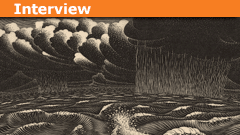
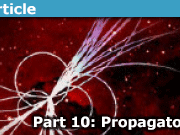
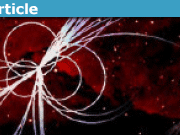
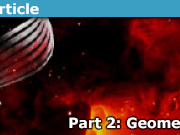


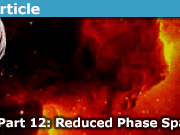
Leave a Reply
Want to join the discussion?Feel free to contribute!